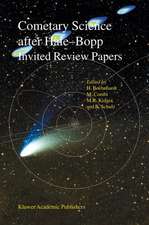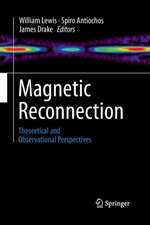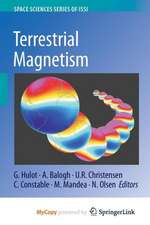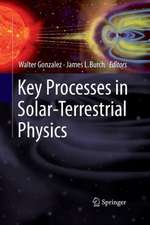ROSETTA: ESA's Mission to the Origin of the Solar System
Editat de Rita Schulz, Claudia Alexander, Hermann Boehnhardt, K.H. Glaßmeieren Limba Engleză Paperback – 23 aug 2016
| Toate formatele și edițiile | Preț | Express |
|---|---|---|
| Paperback (1) | 1076.20 lei 38-44 zile | |
| Springer – 23 aug 2016 | 1076.20 lei 38-44 zile | |
| Hardback (1) | 1255.16 lei 6-8 săpt. | |
| Springer – apr 2009 | 1255.16 lei 6-8 săpt. |
Preț: 1076.20 lei
Preț vechi: 1416.05 lei
-24% Nou
Puncte Express: 1614
Preț estimativ în valută:
205.95€ • 223.64$ • 173.00£
205.95€ • 223.64$ • 173.00£
Carte tipărită la comandă
Livrare economică 19-25 aprilie
Preluare comenzi: 021 569.72.76
Specificații
ISBN-13: 9781493939466
ISBN-10: 1493939467
Pagini: 785
Ilustrații: XLVI, 785 p.
Dimensiuni: 155 x 235 mm
Ediția:Softcover reprint of the original 1st ed. 2009
Editura: Springer
Colecția Springer
Locul publicării:New York, NY, United States
ISBN-10: 1493939467
Pagini: 785
Ilustrații: XLVI, 785 p.
Dimensiuni: 155 x 235 mm
Ediția:Softcover reprint of the original 1st ed. 2009
Editura: Springer
Colecția Springer
Locul publicării:New York, NY, United States
Cuprins
The ROSETTA Mission: Flying Towards the Origin of the Solar System.- The Nucleus of Comet 67P/Churyumov#x2013; Gerasimenko.- Pre-Fly-by Properties of the Rosetta Asteroids Targets 2867 Steins and 21 Lutetia.- The Plasma Environment of Comet 67P/Churyumov#x2013;Gerasimenko Throughout the Rosetta Main Mission.- Dust Environment Modelling of Comet 67P/Churyumov#x2013;Gerasimenko.- Rosetta Ground Segment and Mission Operations.- Scientific Planning and Commanding of the Rosetta Payload.- Alice: The Rosetta Ultraviolet Imaging Spectrograph.- The Comet Nucleus Sounding Experiment by Radio-wave Transmission (CONSERT).- COSIMA: High Resolution Time-of-Flight Secondary Ion Mass Spectrometer for the Analysis of Cometary Dust Particles Onboard ROSETTA.- The Grain Impact Analyser and Dust Accumulator (GIADA) Experiment for the Rosetta Mission: Design, Performances and Current Results.- MIDAS: the Micro-Imaging Dust Analysis System for the Rosetta Mission.- MIRO: Microwave Instrument for Rosetta Orbiter.- OSIRIS: The Scientific Camera System Onboard Rosetta.- RPC: The Rosetta Plasma Consortium.- Rosetta Orbiter Spectrometer for Ion and Neutral Analysis ROSINA.- Rosetta Radio Science Investigations (RSI).- VIRTIS: An Imaging Spectrometer for the ROSETTA Mission.- Rosetta Lander (#x201C;Philae#x201D;) Investigations.
Textul de pe ultima copertă
ROSETTA: ESA's Mission to the Origin of the Solar System is the first book of its kind on ESA’s Planetary Cornerstone Mission, Rosetta, that discusses the science and instrumentation involved. Comets consist of the most primitive material in the solar system. An in depth study of this material could provide us with the knowledge to understand the earliest epoch of the solar system’s formation. Until now, our knowledge of comets has come from Earth-based telescopes and fly-by missions. Rosetta will be the first ever spacecraft to rendezvous with a comet and go in orbit around the nucleus. It will stay there for over one year, in order to study the comet’s evolution. Rosetta will also land on the surface of the comet with its Lander Philae to perform dedicated in-situ analysis of the comet nucleus composition and structure. The Rosetta mission is an ambitious one that is poised to make a dramatic advance in our understanding of comets, and the origin of our solar system.
ROSETTA: ESA’s Mission to the Origin of the Solar System is partially reprinted, with updates and corrections, from Space Science Reviews journal, Vol. 128/1-4, 2007. This book is appropriate for researchers as well as graduate students working in astronomy, planetology, and astrobiology.
ROSETTA: ESA’s Mission to the Origin of the Solar System is partially reprinted, with updates and corrections, from Space Science Reviews journal, Vol. 128/1-4, 2007. This book is appropriate for researchers as well as graduate students working in astronomy, planetology, and astrobiology.
Caracteristici
This will be the first hard cover book on the Rosetta Mission, ESA’s Planetary Cornerstone Mission, discussing science and instrumentation. Rosetta is the first ever spacecraft, which will rendezvous with a comet and go in orbit around its nucleus to explore the evolution of the comet for more than one year. It will land on the comet nucleus surface with its Lander Philae for dedicated in-situ analysis of the comet nucleus composition and structure.
























